Growing Pinguicula together with orchids
A few years ago, we bought a Pinguicula in a hardware store and have been keeping it on the windowsill with our orchids ever since. Pinguiculas belong to the group of carnivorous plants. The upper surface of their leaves are covered with countless sticky droplets that stick to insects. The trapped animals are digested in place to feed the plant. Since our plant is very easy to grow and blooms for months every summer, we would like to describe its care here.
The following photo shows the plant in summer.
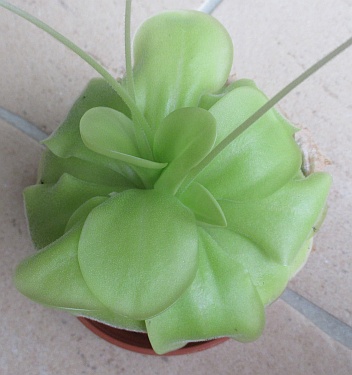
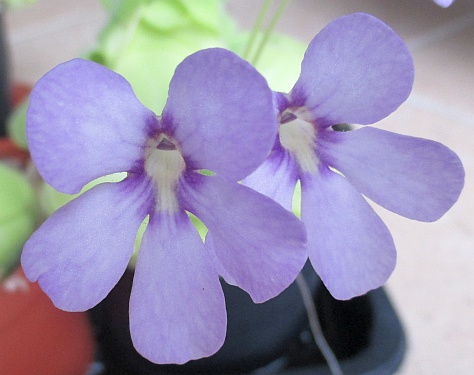
care in summer
The plants stand on a northeast aligned window sill and get in the morning direct sun. Since the plants do not like to dry out, we make sure that the pot continuously stands in some water. This means that we always make sure that there is about 5mm of water in the saucer. In terms of water quality, this type of carnivorous plant has, unlike most other carnivorous plants, low demands. Our plants usually gets rainwater, but it also tolerates tap water. You should not fertilize the plants. During the summer the plants bloom without interruption and catch a lot of small insects.
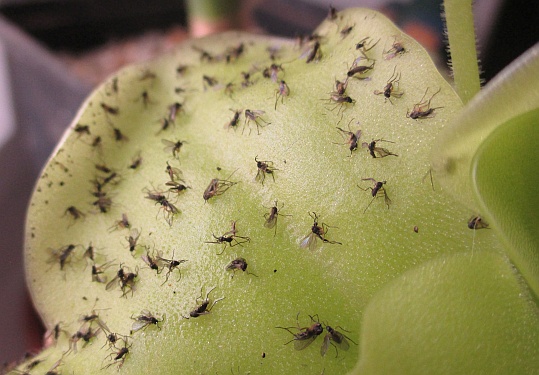
care in fall
In autumn, the flowers become less and also less leaves grow. The plant prepares for its break/rest by making leaf rosettes more compact. From now on, our plants get just enough water to keep the soil wet.
care in winter
In winter, the compact rosettes rest in the pots. There are hardly any new leaves and flowers. Now it is important to keep the planting material moist and wait until spring. During this time, the plants do not catch insects, as the leaves hardly produce sticky droplets.
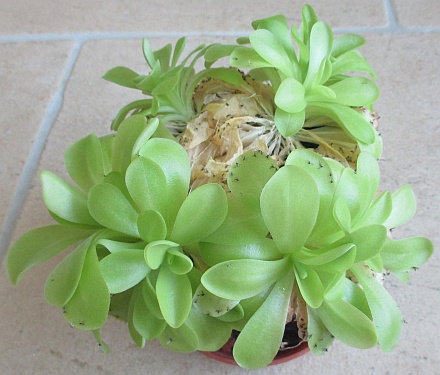
care in spring
At the end of February / beginning of March it is time to replant and separate the plants at the same time. The most loosely anchored plants are lifted from their pots, all old dried leaves are removed and put into fresh substrate.
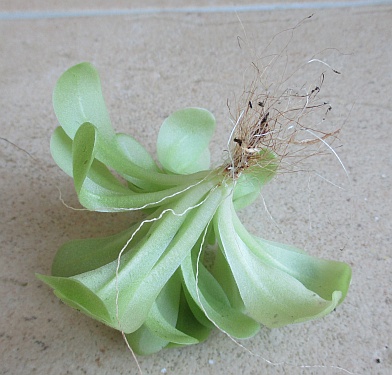
Unlike most other carnivorous plants, our Pinguiculas like ordinary potting soil and have grown into huge plants for years. The substrate should not dry out.
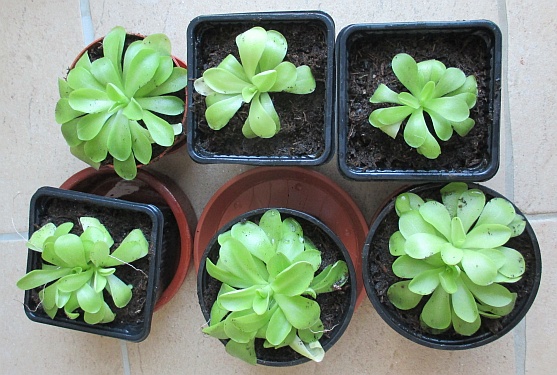
In summary, it can be said that this type of Pinguicula is a very robust plant. It blooms throughout the summer and captures a lot of small insects.
Finally, it should be pointed out once again that the culture variant described here works very well with this Pinguicula. Most other carnivorous plants place significantly higher demands on the plant material and water (low concentration of nutrients) and would not survive this treatment for long.
Author: Thomas Ederer
